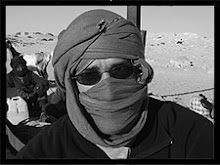Ho Chi Min City, Vietnam. At the conclusion of the Vietnam War, on April 30, 1975, the city of Saigon came under the direct control of the Vietnamese People's Army. Communism had won the day, plunging the American public into a troubling introspective period, dominated by heated debates over the implications of wielding overwhelming force against an enemy that, at best, could put a serious crimp on our import of fresh spring rolls. Many Americans, reeling from the emotional trauma wreaked by this unprecedented event, purportedly made the risky decision to look up "communism" in the dictionary. They were then left to ponder how a simple political theory and ideology that advocates holding the production of resources collectively compelled our government to sacrifice 58,000 of our fellow countrymen. On the plus side, we certainly got a few good movies out of it.
No matter. With the American War of Aggression (as it is referred to out here) at a close, Saigon was immediately re-dubbed Ho Chi Minh City and completely remastered in THX 5.1 Surround Sound. I spent a couple of days trolling down the crowded sidewalks and racing around the busy streets. I hate to admit it, but I really love weaving in and out of traffic at full tilt. Since there is so much congestion in the streets it's easy to squeeze between slow-rolling cars and keep pace with the mopeds. The locals seem to get a real kick out seeing me speed past. I get a lot of waves and smiles, though it's definitely possible they are just poking fun at the pale, sweat-soaked foreigner who thought it was a good idea to bike across a country whose humidity is so high that you could easily steam a lobster on the pavement.
Ho Chi Minh is a fairly standard Asian city otherwise, replete with skyscrapers, museums and landscaped parks--and it is completely overrun with coffee shops. If the idea of the local version of a Starbucks every thirty feet turns you off, don't visit Ho Chi Minh. In fact, stay out of Vietnam altogether. They have a cafe culture here, where dozens of joints vie for the opportunity to serve up the best ice-cold cup of black and bitter brew. Throw a little extra sugar into these small caffeine bombs and you start to get an idea why the streets run a bit like the Grand Prix. Unfortunately, coffee tends to knot my digestive system into a sheepshank, so I was more of a bench-warmer than an active participant.
The city was certainly pleasant. I enjoyed strolling the parks and visiting the various pagodas scattered amongst the multitude of shops. In many ways it is reminiscent of New York's Lower East Side, though with a whole lot less Jewish grandmothers. Reunification Palace, the site of the hand-over of power during the Fall of Saigon in 1975, is laden with historical significance yet burdened by unimpressive architecture. By far the most intriguing experience in Ho Chi Minh was a visit to the War Remnants Museum, which primarily contains relics of the American phase of the Vietnam War. In addition to devastating documentation on the deleterious effects of Agent Orange on the local foliage and population (it is still effecting births today), the museum contains a wealth of photos from hundreds of foreign journalists that most of us have likely never seen. If you were one of the people abhorred by the images of dead American soldiers being dragged through the streets of Mogadishu back in 1992, wondering what type of people would revel in such a horrific act, you may be disappointed to learn that we are those type of people. The stomach churning photos I witnessed of smiling American soldiers dragging mangled bodies behind tanks and Humvees were as disturbing as any war photos I have ever seen. The coup d'état was a grisly image of a smug and satisfied Marine proudly displaying the twisted, sinuous arm and lower trunk of a body obliterated by a rocket attack.
I am not at all trying to suggest that we did not suffer similar indignities, horror and personal devastation. War is a terrible thing. But the next time we think of sitting on our high moral horse, we may want to consider that we are far from the White Knights of justice we may like to think we are. In truth, the War Remnants museum is one of the best organized, referenced and compelling museums I have ever visited, and is definitely a must-see if visiting the region. Having spent a bit of time around the Vietnamese at this point, I cannot for the life of me fathom what compelled Curtis Emerson LeMay (General of the US Air Force and the vice presidential running mate of George Wallace in 1968), to emphatically state: "...we’re going to bomb them back into the Stone Age". I am eager to report that not only have the Vietnamese people weathered the storm of French imperialism followed by American intervention, but I have been completely charmed by this misunderstood and resilient country.
April 4, 2010
Subscribe to:
Post Comments (Atom)





No comments:
Post a Comment